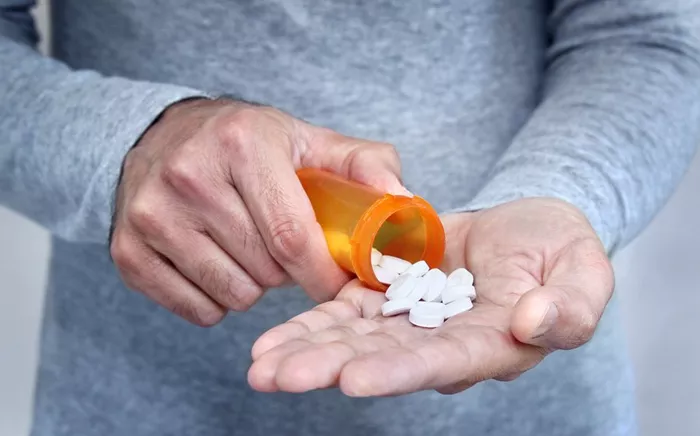Eli Lilly is advancing a new oral GLP-1 medication, orforglipron, which could reshape the weight loss drug landscape currently dominated by injectables like Ozempic and Wegovy. The pharmaceutical giant plans to seek FDA approval for orforglipron in type 2 diabetes treatment in 2025 and for weight management shortly after.
A Promising Alternative to Injections
Recent Phase 3 trial data suggests orforglipron may be just as effective as some injectable GLP-1 medications. Participants on the highest dose lost an average of 16 pounds—or about 8% of body weight—and showed improved blood sugar control, with A1C levels reduced by up to 1.6%.
Unlike its injectable counterparts, orforglipron is a once-daily pill. Experts say this oral format offers greater convenience and privacy, especially for individuals uncomfortable with injections or refrigeration requirements.
Dr. Rekha Kumar, an endocrinologist at Weill Cornell Medicine, noted the pill’s ease of use. “It’s more discreet than an injection. This could be a significant benefit for people hesitant to store medication in shared refrigerators or who dislike needles,” she said.
Structural Differences Could Affect Manufacturing and Cost
Unlike Rybelsus—the only oral GLP-1 drug currently approved—Orforglipron is not a peptide-based treatment. Rybelsus relies on peptide molecules, which are costly to manufacture and transport due to their complexity and need for cold storage.
Orforglipron, by contrast, is a small-molecule drug. These compounds are simpler to produce and more stable at room temperature, potentially making them more accessible. Additionally, it can be taken with food or water at any time of day, unlike Rybelsus, which has strict intake guidelines.
Comparable Efficacy With Fewer Restrictions
The clinical trial showed orforglipron compares well with semaglutide injections in terms of weight loss and blood sugar reduction. While Wegovy users typically lose about 10% of body weight, orforglipron patients achieved up to 8%. Blood sugar reduction was also within the same range as seen in Ozempic users.
However, Eli Lilly’s injectable tirzepatide (sold as Zepbound and Mounjaro) has demonstrated superior weight loss outcomes, which may position orforglipron slightly behind in performance.
Side Effects and Tolerability
Like other GLP-1 medications, orforglipron carries a risk of gastrointestinal side effects. Participants commonly reported nausea, diarrhea, constipation, and vomiting—consistent with the side effect profile of both oral and injectable GLP-1 drugs.
Will It Be More Affordable?
The introduction of a pill-based GLP-1 could reduce some logistical and manufacturing costs. Pills do not require cold storage, nor do they rely on peptide synthesis. These factors could make the medication less expensive to produce and distribute.
However, affordability for patients remains uncertain. Experts point out that oral drugs must deliver more active ingredients to achieve the same effect as injected versions, which could drive up production costs. This added complexity may cancel out any savings from simplified logistics.
Market dynamics further complicate the pricing outlook. Currently, only Novo Nordisk and Eli Lilly dominate the GLP-1 space. Until more pharmaceutical players enter the field, pricing competition will likely remain limited.
M. Christopher Roebuck, PhD, a health economist and founder of RxEconomics, said, “With only two companies in the game, real price drops are unlikely. We need more competitors for meaningful change.”
Pfizer had been developing its own oral GLP-1 drug, danuglipron, but discontinued the program, narrowing future competition.
Access and Insurance Coverage Still Unclear
At this stage, Eli Lilly has not disclosed pricing for orforglipron, and it remains uncertain whether insurance companies will cover it. Currently, coverage for GLP-1 drugs like Ozempic and Wegovy varies widely across providers and plans.
Still, experts believe an oral option could encourage more people to try GLP-1 therapies, particularly those put off by injections or high upfront costs.
“Initial adopters of injectable GLP-1s were willing to pay more,” said Roebuck. “Now the goal is to reach people who were priced out or hesitant. That could motivate companies to lower costs—but only if competition increases.”
Conclusion
Orforglipron offers a promising new direction for GLP-1 treatments, especially in terms of convenience and usability. However, its potential to make weight loss drugs more affordable and widely available will depend on future pricing strategies, insurance coverage, and competitive market pressures. Eli Lilly expects to complete regulatory filings by the end of 2025.
YOU MAY ALSO LIKE:
- U.S. Exit from WHO, USAID Could Spark Global Hunger and Disease Surge
- New Report Spurs FDA Review of Abortion Pill Amid Scientific Backlash
- Air Pollution Accelerates Artery Damage and Heart Disease, Study Finds


